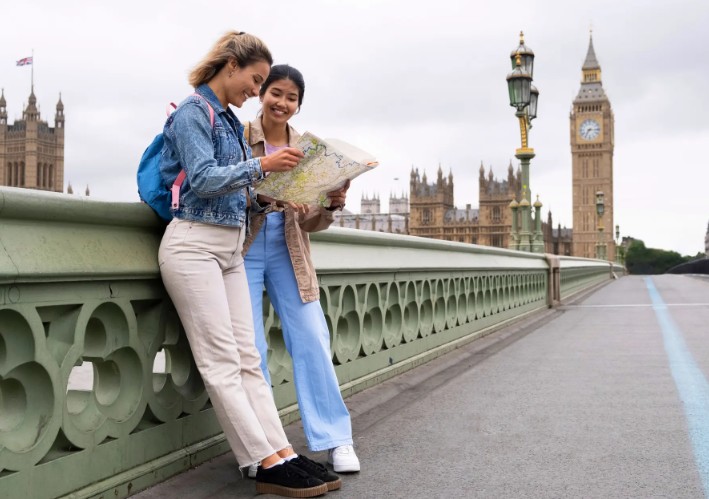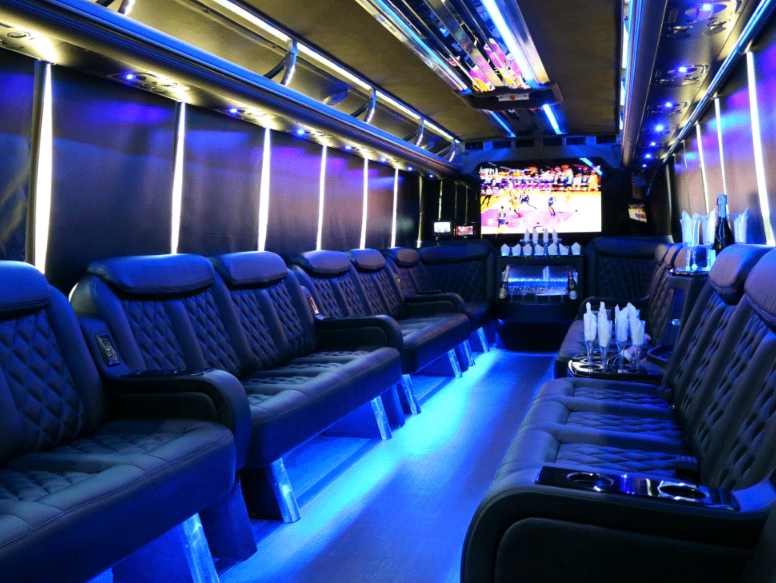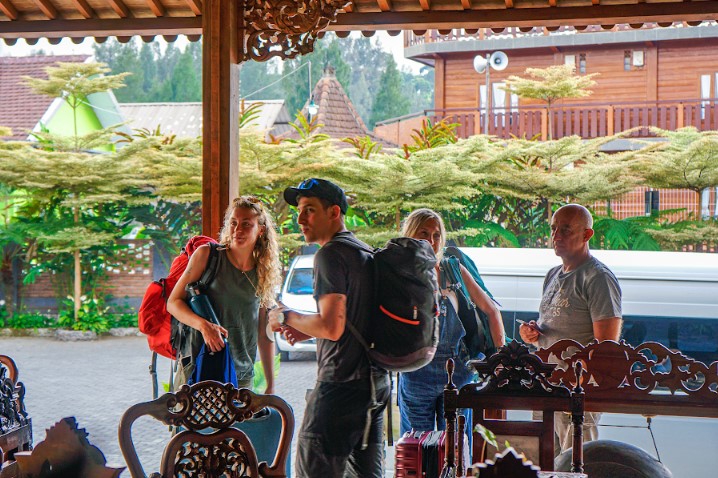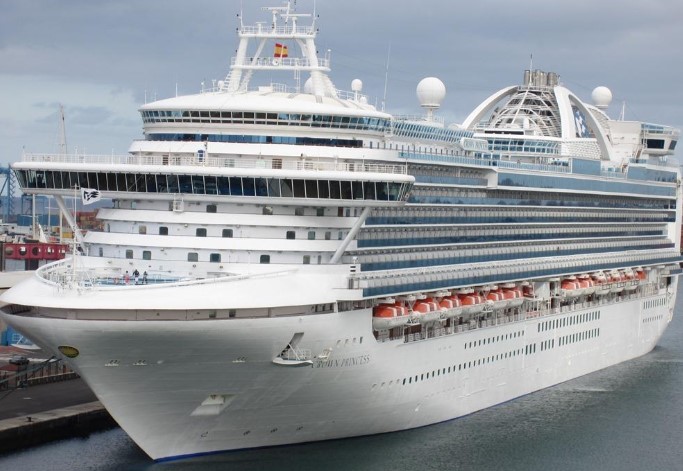Image credit: Daniel Quasar

Meg Ten Eyck is one of the world’s leading experts in LGBTQ+ Travel. Meg has visited 60+ countries, serves on the Board of Directors for IGLTA and Belmond Hotels, has spoken at conferences on five continents, written three books, and had her content read by millions. Follow her adventures around the world on Instagram @MegTenEyck
At Skyscanner, we encourage everyone to travel no matter how you identify or express your gender. Travel is for everyone. But we also recognise there are some important considerations when planning your travel as members of the transgender and gender-expansive communities, to ensure your safety and happiness while exploring.
As a white, thin, queer femme from the United States, my travel experiences and expectations are different than for my gender-diverse friends. In an effort to be as inclusive and intersectional as possible, I created a panel of transgender and non-binary travel experts to provide their tips and recommendations on transgender and non-binary-affirming travel planning.
1. Research the destination
Are you thinking of lounging on a beach with an umbrella drink in hand? Or are you more interested in jetsetting to explore far-off cultures? The first step in planning any trip is usually deciding where you want to go and researching what it’ll be like when you get there.
Giovonni Santiago is a black transgender man, and said, “I try to do a deep dive into the destination I’m visiting and who I’m travelling with because I could be perceived differently if I’m travelling with a lot of female-identified folks. Usually, I’m not most worried about me being trans, sometimes it’s about me being black, but either way I try to understand where I’m going, who I’m travelling with, and how I can be prepared.”
When selecting your destination, keep in mind that policies and social acceptance for transgender people aren’t always the same in different regions of the world. Using tools like IGLTA, LGBTQ+ affirming travel advisors and the local embassy can provide insight into the experiences of local transgender people in the country you’re interested in visiting.




2. Connect with local transgender people
Researching your destination is a must, but reaching out to local people online, with backgrounds similar to yours, is one of the most useful ways to understand what life is like in other parts of the world.
Jamie Anne Harrell, a transgender woman from Atlanta, talked to me about her experience travelling to South Africa: “I was doing my MBA and wanted to find out what trans life was like in South Africa. I was researching both [the] policies in place and public perceptions – I googled ‘are LGBTQ+ rights accepted in South Africa?’ But the rights on paper are very different from what life is like on the ground in Cape Town. I was able to get in touch with a local person who was transgender. They felt relatively safe, they were able to get medical procedures they needed, they attended local trans support groups and had a small social circle of trans people in their lives. It was good to actually meet someone virtually and be able to have that peace of mind prior to travelling.”
3. Look up your chosen travel providers
In Jamie’s experience, “Just because a hotel or a destination is LGBTQ+ friendly, doesn’t mean it’s trans or non-binary friendly, and definitely doesn’t mean the individual employees are welcoming or affirming.”
So how can you tell if the businesses you’re booking will be a good fit for you as a transgender or non-binary traveller? Gabrielle Claiborne, the owner of Transformation Journeys Worldwide, a transgender-focused inclusion training company, recommends exploring the booking process for your travel brands. “While booking a reservation for hotels, airlines, or even rental cars, ask yourself, do I see myself reflected in this process? Do they have pronouns, titles and gender options? Are there images of transgender people? Seeing these options can signify that the brand is working towards gender equality.”
Check their website and see if they make note of transgender-affirming diversity and inclusion training. Jamie added: “I’m much more impacted by the transphobia of the hotel staff or the tour operator I have to see every day of my trip than I am by random people on the street saying something as they’re driving by. I’d prefer the staff to be overly sensitive and overly trained at the places I’m staying.”




4. Have a back-up plan
Melody McClure reminded me that “For transgender people, new isn’t always better. Sometimes new is worse, scary, unknown, or even dangerous. I miss being able to have new experiences. Just taking a road trip can be a challenge but it allows us access to novelty and new experiences. In travel, things change all the time, gate changes, flight delays – things happen. We have to be flexible but planning in advance for those situations makes things easier.”
Linds Cale, a gender nonconforming person, agreed with the advanced planning, and said sometimes just having a hat and throwing it on before walking into a gendered space can be the difference between a peaceful experience or dirty looks. Linds also stressed the importance of having a back-up plan and understanding the details: “Knowing what is expected of me at the check-in counter and understanding alternative solutions like where gender neutral bathrooms are can make your travel plans so much easier.”
Jamie added, “Prior to planning my trip I start thinking about the steps I need to take to be safe. What are some of the ways I can be outed and will that create an unsafe environment?”
Planning for those situations in advance can help you think on your feet when you’re in a new destination. Melody reminded us that “Harm reduction has to be the first priority in any situation. Do what is safest at the moment, but the mental gymnastics of choosing an action like using a men’s bathroom because it’s safer can have lingering effects on our mental health that are tough to deal with.”
5. Consider travelling in a group
Several of the transgender people interviewed recommended travelling with a group. Staying with a group helps provide a cushion of safety in unfamiliar areas. If you’re travelling with a group that you know and trust, allow them to help buffer you in situations that might be tougher.
For example, having a cis friend accompany you to the restroom if you feel uncomfortable. Another great option is using a group tour to blend in with a bigger group. Often there’s safety in numbers and the tour guide can be a helpful buffer.




6. How to deal with airport security
This section could be its own complete article. Be mindful that airport security personnel are trained to identify anxious and suspicious people. But most transgender people are anxious and acting oddly in situations where they’re uncomfortable, like at the airport. Airports are high-stress areas for a lot of people regardless of how they identify themselves. Remind yourself that everyone feels a bit on edge in that environment.
When dealing with airport security, know your rights and be vocal about them. If you get flagged for additional screening, ask for someone to come with you for private screenings or pat downs. Giovanni recommends: “Being vocal [with the airport authorities], letting them know the situation so they’re not surprised by anything.”
7. Take up space
Every person interviewed for this piece mentioned something about confidence and allowing themselves to take up space in their lived experiences.
Melody said, “Life is not just transition and then you die – there are so many beautiful, good things to experience – it doesn’t have to be a sacrifice, you can be trans and have the fulfilling life you were meant to have. I wish I had known before I transitioned how most people just don’t care. Sure, you might get a few looks or comments but for the most part people won’t worry about where you’re going or what you’re doing while you’re travelling and enjoying your vacation.”
Giovonni agreed: “Being trans isn’t all doom and gloom, sometimes being trans is incredible. Being confident is the biggest piece of advice I can offer – people can feel when you’re uncomfortable. If you walk in the place like you know what you’re doing, people are less likely to question you.”
Gabrielle said, “I’m a 6’3 broad-shouldered woman – even if I was a cisgender woman I’d be getting some stares. I have to show up with the attitude of ‘I belong here.’”
“As a trans person,” Melody told me, “you remember the intensity of your first leap towards being out, how emotionally draining and terrifying it is – that feeling stays with you. You get used to constantly looking over your shoulder when something is new; you always have a level higher alert. But you have to remember everyone feels out of their element when they’re in new and unfamiliar situations, it’s human nature. I have to talk myself up sometimes and remind myself that I deserve to be anywhere I want to be.”




8. Packing – literally and figuratively
While we are talking about airports, let’s also talk about packing. Giovanni said, “The airport is a huge trigger for a lot of people. At times I choose to travel without my packer because I know it will set off the body scanner which will create an awkward, unnecessary scene. Being perceived to be cis dramatically impacts your experiences while travelling. Even in airports I often pass as male so I have to explain the situation and directly say ‘I wear a prosthetic’ so they’re not surprised when the scanner detects my packer. But remember, you’re not any less valid for making choices that protect yourself, like choosing not to bind or wear a packer that day if that’s what will keep you safe.”
Some more traditional packing tips were echoed by a few people, like labelling all medications and identifying anything unusual in your carry-on luggage – like dilators or other items that may be unidentifiable if you’re selected for a search.
9. Does your ID match your presentation?
Having legal documentation that matches your identity and presentation can be very helpful. Gabrielle suggested reaching out to agencies that can help with the logistics of getting a passport and documentations with the correct gender markers. Charities like Gendered Intelligence can provide extra advice on this.
But be mindful that any travel documentation like airline tickets, reservations and visas have to be in your legal name as it appears on your identification. If you must travel without an ID that aligns, you can carry a note from your doctor explaining your transgender identity.
Another option for non-binary people that is gaining traction in many countries is the gender neutral passport, with an X marker rather than an M or F. Gabrielle applauded the recent advancements but cautioned non-binary travellers to really think through the impact being outed on your ID will have on your travel experience. Unfortunately, the treatment at immigration varies around the world.
10. Your trip, your rules, your comfort zone
Keep in mind, this is your trip, and it should be fun! Transgender and non-binary travellers have a right to feel safe and affirmed while exploring the world. If you don’t feel ready to book an international trip just yet, domestic travel can be just as rewarding. If you’re nervous about airports, language barriers and cultural differences, try getting your feet wet on an adventure closer to home.
Book a short flight to a nearby city, or take a road trip – somewhere within a few hours drive from where you live – to test what it would be like to experience travel in a way that’s slightly more familiar before branching out to other cultures and places.




Discover where you can go
Ready to get back out there? Plan your next trip by reading up on the latest COVID-19 travel advice and checking where you can go with our interactive global map and Asher & Lyric’s excellent LGBTQ+ Travel Safety Index.





More Stories
Canadian government issues Travel Advisory for thriteen Mexican states
Canada Issued Travel Advisories For These 7 Tourist Hot Spots & It Could Affect Your Trip
Mexico-bound snowbirds face stern travel warning from government